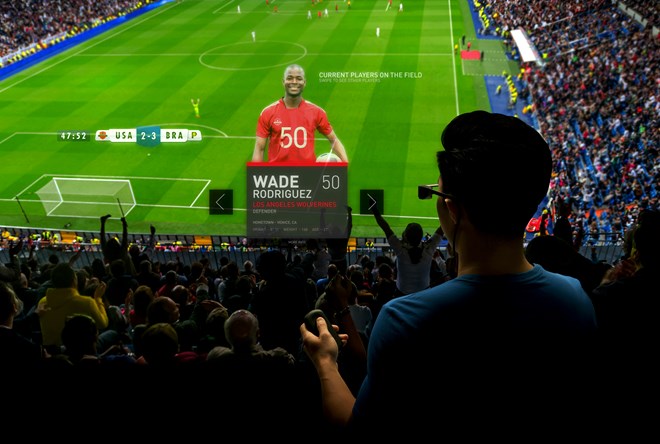
By Mark Romanelli, MBA |
When examining the topic of augmented reality in sports, most of the focus is on the spectator experience. While it’s true that viewing involvement can be enhanced with the delivery of additional information, we can also shift the focus to the experience of sports participants.
Augmented reality (AR), unlike virtual reality (VR), is an immersive experience blending the real-world environment with computer-generated “augmented” elements and information. In most applications, users wear glasses or goggles known as head-mounted displays (HMDs) allowing users to view the real world around them while also seeing graphics, information, or other details presented alongside. AR is a hot tech topic with hosts of new applications in all fields including medicine, manufacturing, and education, to name just a few.
As AR grows in all fields, there are still several barriers which exist that limit its adoption in some areas. The first is the requirement to wear some type of head-mounted display. The next is the cost of equipment necessary for users, particularly the display. The final barrier is the need for information provided by technology or equipment to improve user performance or experience. In the context of many sports, these barriers disappear entirely, making sports an exciting field for new AR applications.
Head-mounted displays no longer remain an issue as many sports already utilize helmets or goggles. The cost of equipment in many sports is already significant enough where the additional cost of augmented reality gear would be considered negligible and well worth the extra expense. Finally, many sports already use digital information provided on two-dimensional displays to enhance participant experience or performance. When considering just a few sports such as paragliding, yacht racing and SCUBA diving, all three of the mentioned barriers to adoption no longer present a hurdle. This three-part framework of head-wear, high-cost, and data-value can be extended to numerous other sports to find immediate and potential future fit. With additional research and examination, this model can be used by sports equipment manufacturers to consider for selecting markets to develop the gear and technology. “Smart” helmets and goggles are already on the market and available for some sports, but we are likely to see more in the future as augmented reality is adopted in so many various sectors.
When considering the high degree of situational awareness required for many sports, the ability to receive useful information without the need for a participant to take their eyes off of the environment around them creates a perfect fit between sports and augmented reality. The popularity of wearable technologies like the Fitbit has already shown us that consumers are open to integrating tech into their sport and leisure activities. AR is just another exciting step in this evolution.
Mark Romanelli is a full time lecturer in the Sports, Culture, and Events Management program at the University of Applied Science Kufstein Tirol (FH Kufstien Tirol) in Kufstein, Austria.